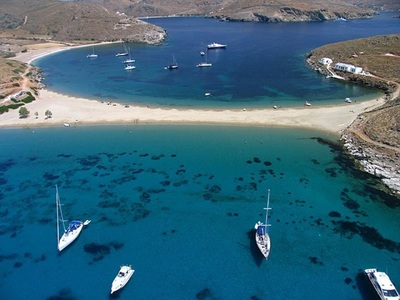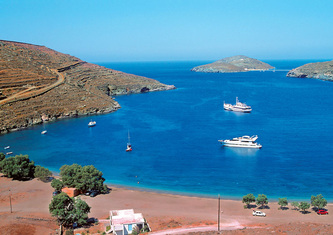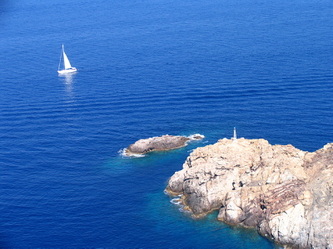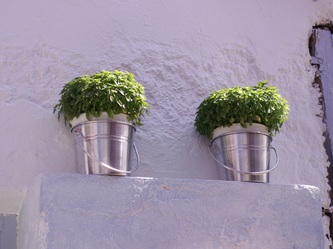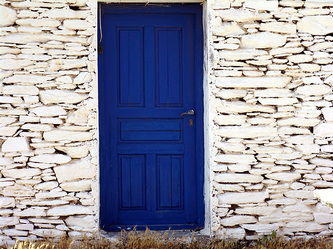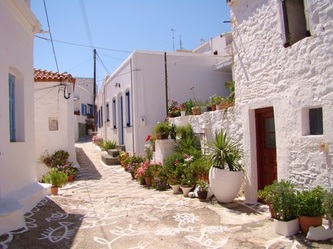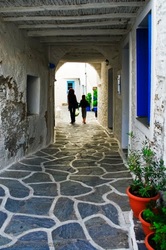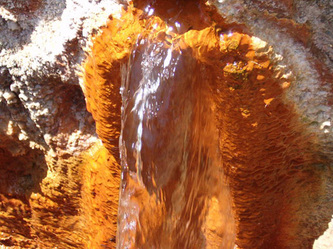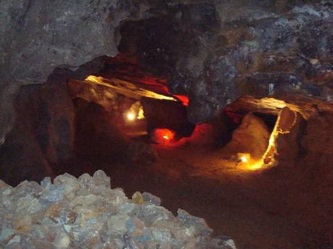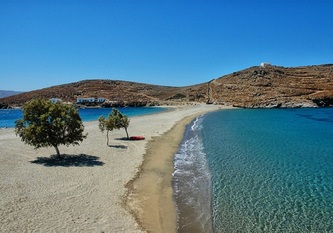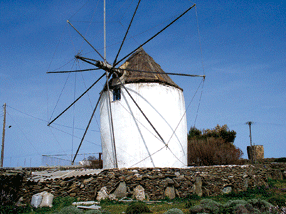
Welcome to Kythnos . In Villa Elena we are very proud of Kythnos and invite you to share our island with us.
Kythnos is 99.3 square kilometers, with 104 km of coastline, 92 bays, coves and beaches, most of which are accessible by car. The island is also known by its residents as Thermia with its roots in the 12th century.
This name relates to the natural hot springs that are in the area of Agia Irini and Loutra.
Most visitors come to the island for its splendid sandy beaches as Apokrousi, Skylou, Gaidouromantra, Kolona, Episkopi, Lefkes and the isolated beaches of Agios Stefanos ,Simousi and Martinakia.
From golden beaches and sheltered coves to sunny blue skies and vivid sunsets, the best feature of Kythnos is its breathtaking natural beauty.
The two biggest villages of Kythnos are Chora and Dryopida.
Chora is the capital of the island, enchants the visitors with its distinctive style. Small squares and picturesque paved alleys with traditional restaurants, coffee bars, patisseries and commercial establishments, white-washed houses with coloured doors and windows stairs, arcades and shades, churches and windmills: all of these comprise a marvelous residential area.
Another place to visit in Kythnos is also the thermal baths.
Dryopida (also named Chorio) is situated in the South of Kythnos – 8 km from Chora. The place has been inhabited since antiquity and has actually maintained its original name. During your visit in the village you will enjoy a walk around the traditional settlement. It is quite impressive that all the houses in Dryopida are two-storey with tiled roofs. According to the residents this is due to the fact that this region has a long lasting tradition pottery.
Near the village is the cave “Katafiki”. It is one of the biggest unexploited caves in Greece, having a rich decoration of stalactites and stalagmites.
During World War II, the cave was a refuge for the residents.
During the year many interesting events, concerts, theatrical performances and art exhibitions are held in Kythnos. Commemorate Greek Easter in Kythnos with traditional celebrations followed up by the Easter Sunday lamb on the spit.
Kythnos is 99.3 square kilometers, with 104 km of coastline, 92 bays, coves and beaches, most of which are accessible by car. The island is also known by its residents as Thermia with its roots in the 12th century.
This name relates to the natural hot springs that are in the area of Agia Irini and Loutra.
Most visitors come to the island for its splendid sandy beaches as Apokrousi, Skylou, Gaidouromantra, Kolona, Episkopi, Lefkes and the isolated beaches of Agios Stefanos ,Simousi and Martinakia.
From golden beaches and sheltered coves to sunny blue skies and vivid sunsets, the best feature of Kythnos is its breathtaking natural beauty.
The two biggest villages of Kythnos are Chora and Dryopida.
Chora is the capital of the island, enchants the visitors with its distinctive style. Small squares and picturesque paved alleys with traditional restaurants, coffee bars, patisseries and commercial establishments, white-washed houses with coloured doors and windows stairs, arcades and shades, churches and windmills: all of these comprise a marvelous residential area.
Another place to visit in Kythnos is also the thermal baths.
Dryopida (also named Chorio) is situated in the South of Kythnos – 8 km from Chora. The place has been inhabited since antiquity and has actually maintained its original name. During your visit in the village you will enjoy a walk around the traditional settlement. It is quite impressive that all the houses in Dryopida are two-storey with tiled roofs. According to the residents this is due to the fact that this region has a long lasting tradition pottery.
Near the village is the cave “Katafiki”. It is one of the biggest unexploited caves in Greece, having a rich decoration of stalactites and stalagmites.
During World War II, the cave was a refuge for the residents.
During the year many interesting events, concerts, theatrical performances and art exhibitions are held in Kythnos. Commemorate Greek Easter in Kythnos with traditional celebrations followed up by the Easter Sunday lamb on the spit.
